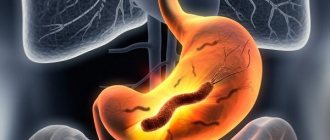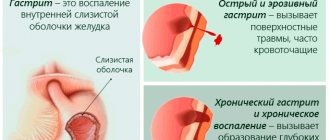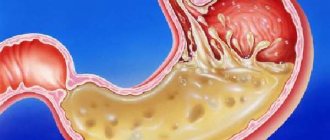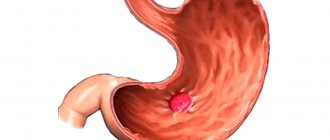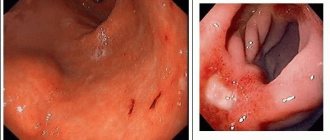How to find out if you have gastritis
Gastritis is an umbrella term currently used by doctors to describe the symptoms of inflammation of the stomach lining. It occurs in two forms - acute and chronic. Acute gastritis occurs suddenly, while chronic gastritis can last for a longer period of time, especially if symptoms are left untreated. If you think you might have gastritis, start reading from step 1 to learn about the most dangerous symptoms.
Method 1: Identifying Early Symptoms
Notice any burning you feel. You may feel a burning sensation in your stomach, especially at night or between meals. This happens because at this time the stomach is empty, and, as a result, stomach acid affects the gastric mucosa more intensely, causing a burning sensation.
See if you have lost your appetite. This may occur because due to inflammation and irritation of the mucous membrane, gases accumulate in the stomach. You may also feel flatulent as a result of not wanting to eat.
Watch out for any nausea you may feel. The acid that is produced in the stomach to break down and digest the food you eat is the main cause of nausea. The acid irritates and eats away the stomach lining, causing nausea.
Notice if you have increased salivation. If you have gastritis, stomach acid moves through your esophagus into your mouth. Therefore, the mouth produces more saliva to protect the teeth from acid.
Increased salivation can also lead to bad breath.
Method 2: Identifying late symptoms
Contact your doctor if you experience stomach pain. The pain can be in the form of a burning sensation, cramping, dull or sharp, as well as constant or intermittent - it mainly depends on the person and the stage of gastritis. The pain is usually felt in the upper central part of the abdomen, but can appear anywhere.
Watch for any vomiting you may experience. Vomiting and indigestion are caused by excess stomach acid, which irritates and eats away the stomach lining. Vomit may be colorless, yellow or green, blood-stained, or completely bloody, depending on the severity of the sores.
Seek medical help if you have black, tarry stools. Black, tarry stools are caused by internal bleeding due to an ulcer. Due to the fact that the blood is old, the stool is almost black. You should also look out for new or old blood in the stool:
Fresh blood means the lining of the stomach is actively bleeding, while old blood means the bleeding is no longer active and happened earlier.
Go to the emergency room if your vomit is the color of coffee grounds. This means that the stomach lining has begun to break down and bleed. In fact, this is a dangerous sign that requires immediate medical attention.
Types of gastritis
Acute gastritis
Acute gastritis occurs suddenly. The cause can be any factor that causes damage to the mucosa - poor quality, too much or heavy food, infection, contact with an allergen (for food allergies), taking alcohol or medications that irritate the mucosa.
Manifestations of acute gastritis are intense dull pain in the epigastric region (if the cause is food, pain usually occurs 20-30 minutes after eating). As a rule, the pain is accompanied by bloating, heartburn, belching, and attacks of nausea.
With proper treatment, acute gastritis goes away within a few days (up to 5-7 days), but complete restoration of the mucous membrane takes much longer.
In addition to ordinary (catarrhal) acute gastritis, the following are possible:
- erosive acute gastritis (not only the superficial, but also the deep layers of the mucous membrane suffer. As a rule, the cause is a chemical burn of the gastric mucosa);
- phlegmonous acute gastritis - purulent inflammation that develops as a result of a foreign object (for example, a fish bone) entering the stomach wall;
- some other types of the disease.
Chronic gastritis
Chronic gastritis develops with improper treatment of acute gastritis or as an independent disease. It may be asymptomatic for some time. Attacks of pain in chronic gastritis usually alternate with long periods of remission. Pain and other symptoms in chronic gastritis are usually less pronounced than in acute gastritis. However, damage to the mucous membrane in chronic gastritis is more significant.
The following forms of chronic gastritis can be distinguished:
- superficial chronic gastritis is the mildest and most common form;
- atrophic gastritis. It is characterized by thinning of the mucosa and a decrease in the number of functioning cells. It manifests itself mainly as a feeling of heaviness in the stomach after eating. There is usually no pain. Eating invariably causes belching, and then heartburn. Since food is poorly absorbed in atrophic gastritis, the patient may lose weight. Sweating after eating and dizziness may occur. With a long course of the disease, signs of vitamin deficiency develop;
- hypertrophic gastritis. It is characterized by pathological growth of the mucous membrane, the formation of cysts and polyps. Most often, this form of gastritis affects people over the age of 30 and, above all, men. It is considered dangerous, since tumors in the stomach can degenerate into cancerous tumors.
There are also gastritis with high and low acidity.
More about symptoms
Heartburn is one of the main “alarm bells”. It occurs as a burning sensation under the sternum, gradually moving to the esophagus and then to the pharynx. Signals increased acidity of the stomach (symptoms of gastritis with high acidity). It manifests itself over a long period of time and is painful, which is why many people resort to symptom relief with folk remedies (water and soda, etc.). It is important to know that such measures may alleviate the condition itself, but are pointless in the long term. And in some cases they contribute to a more aggressive and rapid course of the disease.
Nausea with gastritis occurs in two cases: When hungry for longer than 4-6 hours (together with the so-called “hunger pains”). Immediately after eating. Nausea can be combined with severe pain in the epigastric region or be an independent symptom. In some cases, it is accompanied by bouts of vomiting. At the same time, particles of undigested food are present in the vomit. Bloody inclusions (scarlet or brown) in the vomit indicate the development of a severe erosive form of the disease or the opening of an ulcer. Primary signs of erosive gastritis also include a metallic taste in the mouth, and sometimes aching or cutting pain in the pancreas.
Pain in the epigastrium has a different character:
- Local;
- Irradiating (“giving off” to other parts of the abdomen);
- Shingles (spreading to the chest and back).
“Hunger pains” are more typical for the pathology, but sometimes they also occur after meals, especially fatty, rough, and sour ones. Such pain is combined with a feeling of pressure and fullness in the stomach, even if the portion of food was meager. Discomfort after eating increases when taking a horizontal position. In this situation, many people again make the mistake of resorting to self-medication. A typical option is to take the enzyme drug Mezim, a favorite among Russians.
And although the medicine is relatively safe in itself, its uncontrolled use can lead to negative consequences, including the progression of gastritis. In addition, Mezim is strictly contraindicated in acute pancreatitis or exacerbation of chronic pancreatitis, so before taking it, you should differentiate one disease from another using professional diagnostics.
Tongue lining is not a specific symptom, and can signal other diseases, especially if it is not combined with other symptoms from the “gastritis” list.
Belching almost always has an unpleasant odor. With gastritis with high acidity, it is sour (and after it the sour taste in the mouth increases), with gastritis with low acidity, it is rotten. The second option is often a sign of atrophic gastritis - the most dangerous, carrying serious consequences. In children, belching is accompanied by a partial return of eaten food to the pharynx.
Bloating occurs due to increased gas formation in the intestines. This condition may be accompanied by persistent flatulence.
General malaise with fever and weakness does not always appear, and is necessarily combined with other symptoms of gastritis.
The first signs of atrophic gastritis
Atrophic gastritis is the most dangerous form of pathology, characterized by a tendency to evolve into cancer. Atrophic gastritis is accompanied by low acidity of the stomach (hypoacid gastritis). Unlike hyperacid gastritis, it occurs with vague symptoms and is difficult to recognize (symptoms of gastritis with low acidity). In 85% of cases, there are no characteristic signs of gastritis - heartburn, epigastric pain, etc.
With grade 1 atrophic gastritis, in the early stages you can notice mild signs of dyspepsia, which intensify as the stages of the pathology change.
Among them:
- Heartburn, nausea, moderate epigastric pain after eating specific foods (usually milk, chicken eggs, red meat, pickles and smoked meats, marinades, fatty foods);
- Pulsation, rumbling, “overflow” or gurgling in the stomach;
- “Heavy” rotten odor from the mouth;
- Persistent constipation;
- Rapid weight loss.
Along with the main symptoms, signs of hypovitaminosis appear - tingling of the tongue, yellowness of the skin, ulcers on the mucous membranes of the oral cavity.
Detection of atrophic gastritis in the early stages is a fundamental factor in preserving the health and life of the patient. At the same time, it is very difficult to recognize it on your own. Outpatient diagnosis is also more difficult than with ordinary gastritis. Therefore, patients at risk are recommended to have regular (every 6-10 months) preventive examinations with a gastroenterologist.
The first nonspecific symptoms of gastritis
In addition to the standard signs of dyspepsia and other manifestations of the gastrointestinal tract, the disease is characterized by nonspecific symptoms.
Among them:
- Temperature surges (periodic increases to subfebrile values);
- Dry lips;
- Formation of cracks in the corners of the mouth;
- Decreased quality of skin, hair and nails;
- Paleness and dryness of the skin;
- Hyperhidrosis (excessive sweating);
- Anorexia (decreased or complete absence of appetite);
- Losing weight without objective reasons.
These symptoms do not indicate gastritis by themselves, but in combination with specific ones they complement the clinical picture.
How to understand that you have gastritis: symptoms
Diseases of the gastrointestinal tract are usually accompanied by pain in the abdomen, so-called abdominal pain. Its cause is usually spasms due to excessive activity of the biliary tract and intestines. Although it should not be ruled out that treatment of pancreatitis in adults or therapy for Helicobacter pylori, an infection that causes the formation of duodenal and stomach ulcers, may be required.
An equally common symptom is heartburn, that is, a burning sensation or pressure behind the breastbone. Heartburn is possible with any acidity of gastric juice, although with increased acidity it occurs more often.
Nausea - such an unpleasant sensation in the mouth, chest, epigastric region - is one of the symptoms of acute and chronic gastritis, peptic ulcer of the duodenum and stomach, pancreatitis.
Nausea - such an unpleasant sensation in the mouth, chest, epigastric region - is one of the symptoms of acute and chronic gastritis, peptic ulcer of the duodenum and stomach, pancreatitis
It must be said that most diseases of the gastrointestinal tract are not only characterized by similar symptoms, but are also capable of provoking the development of each other. For example:
- pancreatitis and cholecystitis are frequent companions;
- if an exacerbation of gastritis is not treated in a timely manner, this can provoke the development of a stomach ulcer;
- helicobacter pylori treatment must be carried out, otherwise the process of ulcer formation in the duodenum or stomach will begin;
- Failure to promptly treat dysbacteriosis in adults provokes the development of intestinal infections that are dangerous not only to health, but also to human life.
If symptoms of gastrointestinal tract diseases appear, you must immediately seek advice from a gastroenterologist, undergo the necessary examinations, and after a diagnosis has been established, follow all the specialist’s recommendations.
The State Research Center for Preventive Medicine, equipped with the most modern equipment, employs leading experts in this field - they will provide any type of medical services and qualified assistance.
Are symptoms different for men and women?
In men and women, the early signs of gastritis are practically the same. But the manifestation of hypocortisolism, which occurs in the autoimmune and atrophic form of the disease, is more often expressed in women. These include:
- Reduced blood pressure;
- Dull libido;
- Depression;
- Sleep disorders.
They can also indicate other diseases, and in the case of gastritis they are necessarily combined with specific signs of the disease. Otherwise, symptoms manifest themselves equally in adults of both sexes.
Manifestations of gastritis in adolescents and children
The first symptoms of gastritis in adolescents and children are somewhat different from those in adults. More precisely, the symptom complex is similar, but manifests itself differently:
- Moderate or severe pain in the solar plexus area, often local, without irradiation to other parts of the abdominal cavity;
- Heartburn, which occurs mainly after physical activity (in adolescents after passing physical education standards at school, in children - after sports games with jumping and sharp bends);
- Belching (sometimes with small amounts of food eaten);
- Discomfort in the epigastrium after eating;
- Loss of appetite;
- Severe and sharp pain in the epigastric region upon palpation.
In children, the signs of hypovitaminosis due to gastritis are more pronounced than in adults.
The skin becomes pale, sometimes bluish. The general condition is regarded as lethargic - the child becomes capricious, refuses previously captivating entertainment, and loses his addiction even to his favorite delicacies. Sleep and daily routine are disrupted. Many children complain of fatigue after eating - as if they were “tired” while eating it. Signs of dyspepsia are almost always accompanied by signs of anemia. In acute gastritis, symptoms include nausea and vomiting. They can appear together, or replacing each other. In severe cases, vomiting becomes unproductive and indomitable, causing general dehydration of the baby's body. Persistent diarrhea, which is also often observed with gastritis in children, can increase dehydration.
Since the first manifestations of gastritis in adolescents and children are noticeable, the prognosis for treatment is better than in adults who are accustomed to ignoring changes in the body until the last moment. If your baby has any of the above complaints, you should urgently visit a pediatric gastroenterologist.
Symptoms of acute gastritis with low acidity
A reduced concentration of peptic juice is not able to suppress the growth and reproduction of pathogens. They colonize the walls of the digestive tract, and its mucous membrane becomes inflamed.
How to identify gastritis with low acidity? Manifestations of this disease are as follows:
- belching with a rotten egg taste;
- putrid odor from the mouth;
- bloating and rumbling in the intestines produced by the fermentation process;
- heartburn (burning sensation in the upper esophagus and pharynx);
- feeling of heaviness in the solar plexus;
- moderate dull pain in the umbilical region appears 40-60 minutes after a snack;
- diarrhea or constipation;
- feces with pieces of undigested food, itching and irritation around the anus.
Long-term manifestations of hypoacid gastritis
The inability to absorb proteins, minerals, and vitamins is the cause of vitamin deficiency, decreased immunity and the body's susceptibility to any disease.
Qatar with low acidity is the cause of the following manifestations:
- weight loss;
- apathy, weakness;
- brittle and peeling nails;
- dry, thinning skin and hair;
- acne;
- expanded vascular network on the cheeks and nose;
- low blood pressure;
- allergic reactions.
Symptoms of acute gastritis with high acidity
An increase in the acid saturation of stomach juice corrodes its walls, causing peptic ulcers. This form is characterized by severe pain: when the stomach is full, the acid-corroded walls are irritated by food, while when the stomach is empty, digestive juices are irritated.
How to independently determine gastritis with high acidity? Hyperacid catarrh is characterized by the following symptoms:
- severe pain under the sternum between the ribs, appears on both a full and empty stomach;
- belching sour or bitter;
- heartburn, which is provoked by sour foods and dishes flavored with a large number of spices and herbs;
- copper taste in mouth;
- profuse salivation at the sight of lemons, pickles, apples;
- heaviness and bloating of the abdomen;
- constipation or diarrhea that occurs immediately after a snack;
- nausea during or immediately after a meal.
Symptoms of chronic gastritis
How to determine chronic gastritis at home? The clinical picture is not as bright as in the acute course. An exacerbation of symptoms occurs after a diet violation.
Possible manifestations:
- pain in the solar plexus area, can be cramping, intense or nagging, moderate or mild, most often occurs on an empty stomach;
- a feeling of heaviness after a meal, a feeling of fullness in the stomach;
- belching of air and food, possible vomiting;
- decreased appetite;
- nasty taste on the tongue;
- bloating and unstable stool.
Types of gastritis
According to the nature of the course, gastritis is classified into:
- Acute gastritis
this form occurs as an acute inflammatory process; it develops rapidly, literally a few hours after provoking factors. Most often, acute gastritis is associated with intestinal infections or toxic infection due to ingestion of food that contains bacterial toxins, for example, staphylococcal toxins. Acute gastritis can also be caused by taking certain medications and chemicals that damage the mucous membrane - alcohol, alkaline and acidic solutions.
- Chronic gastritis
This is a constant, sluggish process of disruption of the stomach, accompanied by a structural change in the mucosa and its progressive atrophy. Typically, an acute disease becomes chronic with periods of remission and exacerbations. Some patients do not experience serious ailments or severe severe symptoms for a very long time, so chronic gastritis does not allow itself to be detected for a long time. Factors contributing to the development of the disease also include poor nutrition, intake of hot, spicy foods, food allergies, infections, metabolic disorders, smoking and alcohol.
What happens during gastritis in the human body? When pathogenic bacteria multiply or an aggressive environment enters the stomach, the body’s immune system, in response to the destruction of the mucous membrane, produces special substances that try to restore the integrity of the gastric mucosa, and externally such a fight is expressed by an inflammatory reaction, pain, loss of appetite, heartburn and other symptoms.
How to determine the type of acute gastritis?
Gastritis is of the following types:
- catarrhal;
- fibrinous;
- necrotic;
- phlegmous;
- chronic.
To overcome a disease, you need to know enough information about it. So, let’s look at what types of gastritis there are in more detail.
Catarrhal
Catarrhal is the simplest and most common form, diagnosed by gastroscopy. Occurs as a result of mild food poisoning, allergies, overeating and even nervous tension. Typically, this type of gastritis is accompanied by small pinpoint bleeding, a large amount of mucus, thickening in some places of the stomach and the presence of edema. Its symptoms: sour breath; dry mouth; vomiting of undigested food debris; weakness and fever.
Fibrinous
Fibrinous is a more severe form; in addition to the above symptoms, new ones are added. Inflammatory processes begin, accompanied by tissue necrosis in a small amount. Purulent formations begin to appear. Depending on the depth of tissue damage, superficial and deep gastritis are distinguished. A variety of this form requires immediate medical intervention.
Symptoms of fibrinous gastritis:
- headache;
- pain in the stomach, mainly after eating.
Necrotic
Necrotizing is not a very common form of gastritis; it occurs as a result of poisoning with chemicals. When, for example, acids enter the gastrointestinal tract, so-called coagulation necrosis is formed, if we are talking about salts - colliquation necrosis. With necrotic gastritis, ulcers and wounds appear not only on the mucous membrane, but throughout the entire thickness of the stomach.
Most often, this type of disease affects alcoholics who drink alcoholic beverages with a high content of ethyl alcohol. People who have suffered from this type of disease experience discomfort in the stomach for the rest of their lives due to the formation of scars in it. Its symptoms are:
- constant thirst, pain in the mouth, secretion of viscous saliva;
- general weakness with headaches;
- pale complexion;
- vomiting often mucus or blood.
Phlegmous
Phlegmous is the most serious form of acute gastritis. May be a consequence of catarrhal gastritis. Accompanied by damage to all layers of the stomach. In the most severe cases it can be fatal. Requires immediate medical attention. With this type of gastritis, you should immediately consult a doctor and get recommendations for its treatment.
Symptoms of this type of gastritis and obvious signs are:
- thirst;
- fever, chills;
- feeling of nausea, vomiting, most often bile or blood.
Possible consequences
The key problem is that a person himself destroys his health. Gastritis in itself does not pose a huge threat, but ignoring it and worsening the disease leads to the expected consequences.
- The development of anemia, that is, anemia. A common phenomenon provoked by a long course of the chronic form of the disease and the absence of any treatment actions. A special enzyme is produced inside the stomach. Its job is to convert vitamins B12 into a form suitable for absorption. Gastritis leads to enzyme deficiency, the vitamin is not absorbed, and therefore blood cells are not formed in the required quantity and quality.
- Ulcers and erosions. This is a gradual phenomenon caused by the same ignorance of chronic gastritis. Inflammatory processes progress to the stage of destruction of the walls, ulcers and foci of erosion appear. Here we are talking about the probable death of the patient.
- Rebirth. In simple terms, it is cancer. With gastritis, people continue to consume unhealthy foods and do not give up bad habits. Irritating factors regularly act on the mucous membrane. As a result, the cells become pathological. This is a direct path to stomach cancer.
- Digestive dysfunction. The stomach ceases to function properly; it cannot fully and efficiently digest food. Because of this, food remains in the digestive tract for a long time. The body does not absorb nutrients, resulting in a deficiency of vitamins and microelements. This negatively affects the general condition and can become an impetus for the development of new diseases.
https://www.youtube.com/watch?v=AvGf_Z1gn18
Also, ignoring the problem of chronic gastritis leads to:
- pancreatitis;
- peptic ulcer;
- internal bleeding;
- bulbita, etc.
The consequences are potentially dangerous. Therefore, one should not take the diagnosis lightly.
Precursors of the disease, their significance for determining the diagnosis
We invite you to find out the factors that cause the disease. Information combined with signs of the disease will give a complete picture of the presence or absence of gastritis and the type of disease.
Without one of the components, the clinical picture does not provide complete information, leading to confusion, ignoring the cause or existing symptoms.
Common factors are recognized as precursors of the disease:
- unhealthy diet: eating fatty, spicy, heavily fried, poorly digestible, very low or high temperature foods. Overeating, long periods between meals, and eating low-quality, contaminated foods are harmful;
- consumption of alcoholic beverages, nicotine;
- uncontrolled use of medicines;
- chronic diseases;
- burn, frostbite;
- chronic infections;
- poor blood circulation;
- disturbance of the nervous system, endocrine organs;
- heredity.
All of the listed symptoms and signs of the disease clearly indicate the presence of the disease. Remember, gastritis can be established with one hundred percent certainty by conducting special studies in specialized institutions. Therefore, if there are signs of the disease, it is better to consult a doctor. The doctor will select the correct and competent treatment.
Diagnosis of the disease
Whether the treatment will be successful depends on how quickly and how accurately the diagnosis is made.
It is not so easy to identify such a pathology, because many diseases of the gastrointestinal tract have similar symptoms. Gastritis can only be recognized through a set of diagnostic measures:
Objective diagnosis
To clarify the diagnosis, the doctor conducts an objective diagnosis. Examines the external signs of the disease and talks with the patient. This helps to get an idea of the cause of the attack or exacerbation.
External factors
To clarify the diagnosis, doctors often use a physical examination. Basically, they resort to palpation. When you press on the stomach area, pain is felt. However, that factor only indicates the presence of inflammation. The relevance of such an examination is important only in the case of the development of acute gastritis.
It is very important to take into account all external factors, so the doctor must pay attention to factors such as fever, types of vomit, and also the degree to which the stomach muscles are tense.
After the anamnesis is collected, based on it, an assumption is made regarding the presence or absence of gastritis. To confirm the diagnosis, additional examination is necessary.
Laboratory methods
Conducting research in a laboratory (taking tests) is one of the ways of complex diagnostics. To establish an accurate diagnosis you will need:
- Taking a general blood test (in case of illness, the number of red blood cells, platelets, leukocytes and hemoglobin level will be reduced, and the ESR indicator, on the contrary, will be increased);
- Stool analysis to determine whether there is occult blood and whether Helicobacter bacteria are present;
- Analysis of urine;
- Blood chemistry. This analysis will help differentiate gastritis.
Instrumental diagnostics
This type of research is carried out using various equipment and devices. More often this method is used for chronic inflammation. So, if necessary, the doctor may prescribe an ultrasound of the problem area.
- FGDS, or gastroscopy, is the main way to help establish pathology. The procedure is carried out using a special flexible probe with a miniature camera installed at the end. Through the esophagus, this device is introduced into the patient’s stomach and it is established where the inflammatory process is localized, its typology, the extent to which the mucous membrane is affected, and whether an ulcer is excluded. A device for gastroscopy transmits an image of the mucous membrane to a computer, where the doctor evaluates the changes that have occurred in the stomach.
- Tissue biopsy. During a gastroscopy, small tissue samples are removed from the stomach. They are subsequently examined. This procedure is painless, but provides a lot of information. Tissue collection is carried out from different parts of the stomach, to complete the picture.
- Determination of gastric juice components. During gastroscopy, not only pieces of tissue are taken, but also samples of gastric juice. A similar procedure is preceded by taking a special breakfast, which stimulates the intensive formation of gastric juice. Such an analysis allows not only to confirm the diagnosis, but also to gain insight into the causes of the development of the disease. If the gastric juice contains quite a lot of gastrin, we can say with confidence that the disease was caused by Helicobacter.
- X-ray. Fluoroscopy is performed only after the patient has taken a special dye. In this way, it is possible to determine whether an inflammatory process is occurring.
Only with the help of properly selected diagnostic methods will it be possible to identify the disease at an early stage of development, which significantly speeds up the recovery process.
Methods for diagnosing gastritis
The set of diagnostic measures for suspected gastritis includes endoscopic and laboratory tests.
Gastroscopy
Fibrogastroscopy allows the doctor to see the condition of the gastric mucosa. During the study, a biopsy and pH-metry may be performed - a study of stomach acidity. At “Family Doctor” you can undergo gastroscopy in a state of medicated sleep.
More information about the diagnostic method
General blood analysis
If gastritis is suspected, when analyzing the results of the CBC, attention is paid to such indicators as the level of hemoglobin, red blood cells, and ESR.
More information about the diagnostic method
Blood chemistry
A biochemical blood test is used in the diagnosis of chronic autoimmune gastritis.
More information about the diagnostic method
Blood test for antibodies to Helicobacter pylori
To diagnose gastritis caused by Helicobacter pylori bacteria, an immunological test is performed to detect antibodies to this type of bacteria.
Stool analysis
Along with an immunological blood test, a stool test can also be used to detect Helicobacter pylori.
Breath test for Helicobacter pylori
The presence of Helicobacter pylori in the body can be detected using a urease breath test directly at an outpatient appointment with a gastroenterologist.
Sign up for diagnostics To accurately diagnose the disease, make an appointment with specialists from the Family Doctor network.


